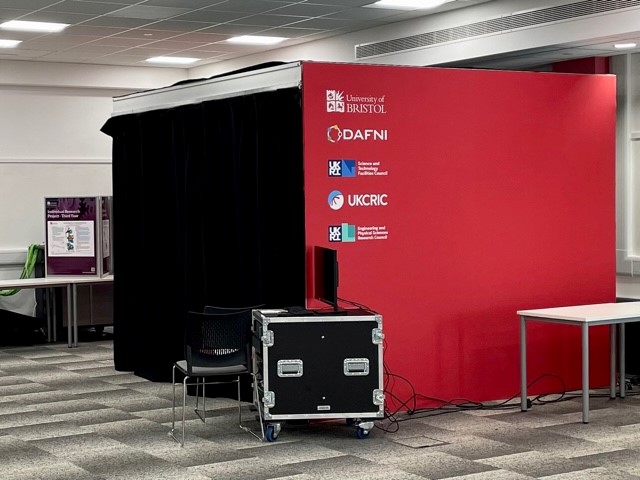Methods Ideation for Participatory Critical Futures Making in Immersive Shared Spaces
How can shared immersive environments facilitate the co-creation of fairer and more sustainable futures? How can communities at the margins be actively included using an immersive digital shared space?

Social futures are frequently presented as digitally-driven, ‘predicted inevitables’, and draw on a narrow range of experiences and priorities. This framing often excludes the voices of communities at the margins, limiting the opportunities for people to shape their own futures. It also fails to draw on the diversity of knowledges and lived experiences necessary to generate more sustainable and inclusive futures and respond to the complex challenges currently facing society. It is therefore imperative to democratise and diversify futures thinking and futures making in a “participatory futures praxis” to support living well for all throughout the 21st century.
What did the project involve?
The core aim of this Ideas Exchange was to explore how shared immersive environments can facilitate the co-creation of fairer and more sustainable futures with communities at the margins using an immersive digital visualisation shared space.
The Ideas Exchange consisted of a series of virtual workshops as a project team to further develop their ideas for the potential of immersive visualisations for working with marginalised participants around the theme of public health and wellbeing. This was followed by a final in person workshop with a wider group of community participants and digital artists in developing use case scenarios for the potential role of immersive space in futures-in-the-making activities.
Activity 1: Mapping the present: mapping feelings, experiences and stories associated with health and wellbeing to the urban environment.
They opened the workshop with a mapping activity, prompting participants to add sticky notes to Bristol maps about their experiences, stories and feelings associated with public health and wellbeing in the urban environment.
Activity 2: Encountering futures. Challenging accepted futures.
The second activity asked participants to identify and critique different futures – what ideas, stories and images of the future (in the area of public health and wellbeing in the urban environment) have they had encountered, e.g. in advertising, media, discourse, etc. Participants were asked to reflect on what these futures say about public health and wellbeing, how they felt about that future, what their implied role place in that future is, who stood to benefit from it and what questions they may want to ask about it?
Activity 3: Introduction to the multi-user shared visualisation environment.
Participants were introduced to the technology, an immersive shared visualisation space that provided an opportunity to support participatory futures making through:
- Supporting communication, collaboration, and participation in a shared and social space where people are physically co-present.
- Enabling emerging, complex, dynamic, and sometimes abstract ideas about futures to be visualised and discussed in more immediate and tangible ways.
- The potential for wider public engagement in futures thinking through the creation of a social, fun, regenerative space that can both be both part of, and an escape from, routine daily life.
This was the final activity in the workshop because the researchers wanted participants to come to it having already considered the issues around participatory futures-making, rather than starting from the assumption that the technology might provide a solution.


Who are the team and what do they bring?
- Lyndsay Grant (Education, University of Bristol) is a researcher with a focus on critical approaches to digital technologies in society and education, digital and data literacies, and sociotechnical futures.
- Neil Carhart (Civil Engineering, University of Bristol) is a researcher with an interest in the relationships between the design of the ‘built environment’ and health and wellbeing. He is also interested in the use of digital technologies to support co-design and decision making in shaping future cities.
- Jon Somerscales is an interaction designer and user researchers whose public creative research projects have focused on positive social and environmental behaviour change. As an artist, Jon researches novel interaction design, regenerative materials and speculative futures that could highlight better outcomes for us and the planet through a critical making practice. He has worked specifically on circular economies, repairable tech, and disability in public spaces.
- Joseph Wilk is an artist, programmer and live coding performer exploring automative forms of expression that utilise new interfaces to work with alternative bodies. His experience of disability – living with pain, physical limitations, disillusionment and disconnection – strongly impacts his practice. He deconstructs, misuses, and repurposes software and hardware to challenge notions of ownership, narrative and visibility.
- Workshop participants: Dean Tamagno, audio-visual artist; Mitchell Wilson, AR designer; Thomas Ham, creative artist; Ian Watt, public contributor, TRUUD; Jo White, senior research fellow, University of the West of England.
What were the results?
Through the workshops the participants explored important ideas around the potential of immersive visualisation spaces for community participants in ways that matter to them; the perils and potential of immersive visualisation tools to support community activism; participatory methods for engaging in futures thinking.
Each participant identified their own specific areas of interests within the wider theme of health and wellbeing which could potentially lead on to inform future projects in this area.

